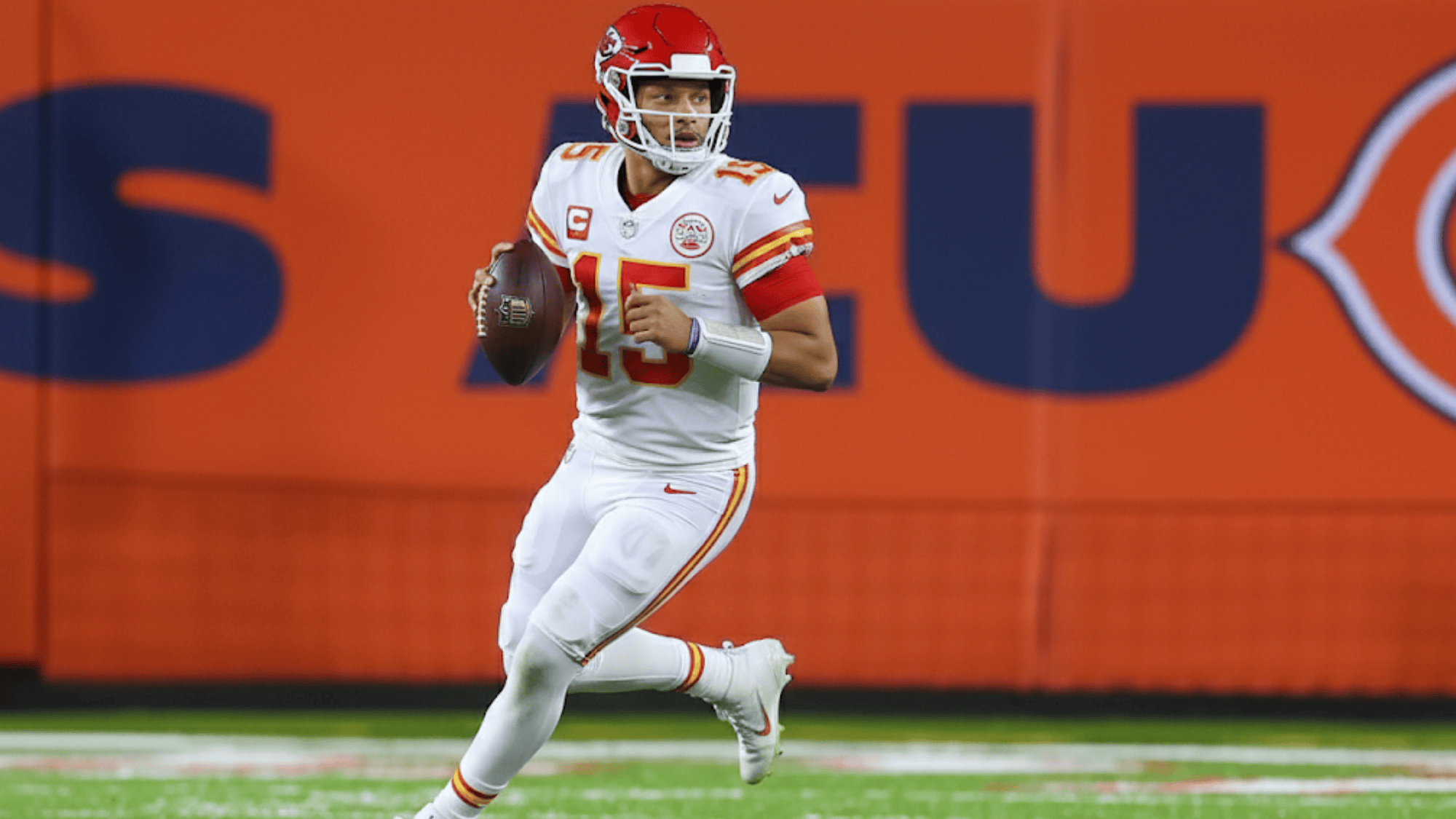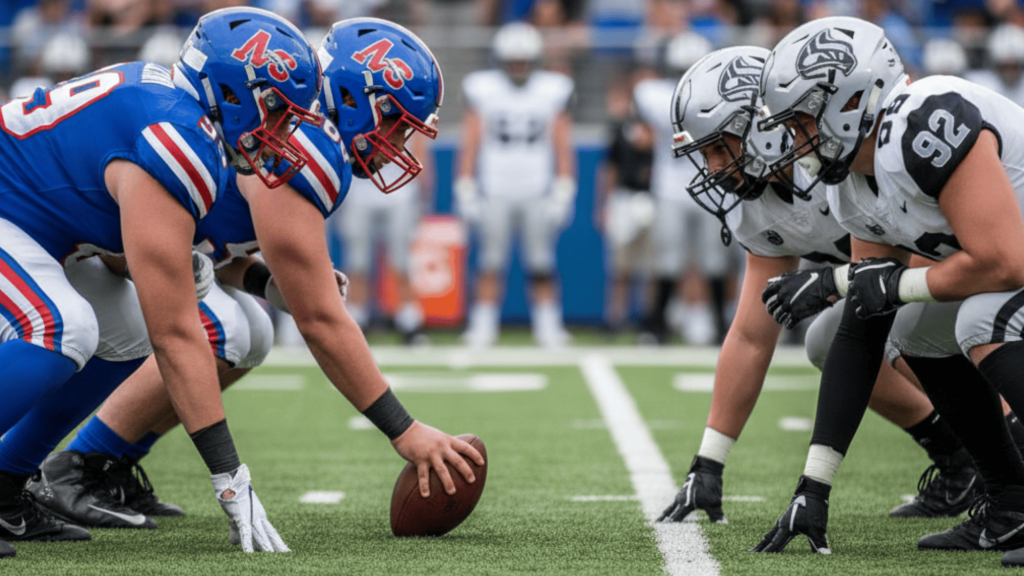Football is one of the most popular sports in the United States, but for beginners, the rules can feel confusing at first.
With all the players, numbers, and whistles, it may seem like you need a playbook just to watch a game. The good news is, once you learn a few simple basics, the game becomes much easier to follow and a lot more fun to enjoy.
In this beginner’s guide, we’ll break down the most important football rules that everyone should know.
From the field setup to scoring points, this guide will help you understand the game step by step, so you can watch with confidence and cheer like a pro.
The Football Field & Teams
A football game is played on a large rectangular field that is 100 yards long and 53 yards wide. At each end of the field, there’s an end zone, which is the main target area where teams score touchdowns.
The field also has yard lines marked every 5 yards, helping players, referees, and fans see how far the ball has moved.
Each team can have 11 players on the field at a time. These players are divided into three main groups: the offense (attempts to score), the defense (attempts to stop the opposing team), and special teams (used for kickoffs, punts, and field goals).
Think of it like a chess match on grass, where every player has a special role and strategy.
The Objective of the Game

At its core, football has one simple goal: score more points than the other team before the clock runs out.
- Teams take turns playing offense (with the ball) and defense (trying to stop the ball).
- The offense works to move the ball down the field by running or passing.
- A score happens when the ball is carried into the end zone or kicked through the goalposts.
- After each score or failed attempt, possession changes, and the other team gets their chance.
That’s it, football is really just about moving forward, scoring points, and keeping the opponent from doing the same.
Scoring Rules
In football, every play builds toward the same goal: putting points on the scoreboard. Different actions earn different point values, and knowing them helps you follow the excitement more easily.
| Scoring Play | Points | How It Happens |
|---|---|---|
| Touchdown | 6 points | Run with the ball into the end zone or catch it there. |
| Extra Point | 1 point | Kick the ball through the uprights after a touchdown. |
| 2-Point Conversion | 2 points | Run or pass into the end zone after a touchdown instead of kicking. |
| Field Goal | 3 points | Kick the ball through the uprights during regular play. |
| Safety | 2 points | Defense tackles the offense in their own end zone. |
Understanding the point system makes every drive more exciting, since each play can change the score in different ways.
Downs & Yardage Explained
If there’s one rule you must understand to “get” football, it’s the system of downs. A down is simply a try, or an attempt, for the offense to move the ball forward.
The offense gets four tries to advance at least 10 yards. If they succeed, they earn a first down, which resets the count and gives them four more chances.
Here’s an easy way to picture it: imagine walking across a yard in four giant steps. If you can cover at least 10 yards in those four steps, you get to keep walking. If not, you stop, and the ball goes to the other team.
This system keeps the game moving and creates the suspense that makes every play matter.
Offensive Rules (What the Ball-Carrying Team Does)
The offense is the team with the ball, and their job is simple: move it forward and score points. They can do this in two main ways:
-
Running Plays: the quarterback hands the ball to a running back, who tries to carry it forward.
-
Passing Plays: the quarterback throws the ball to a receiver downfield. Only one forward pass is allowed per play.
Key offensive positions include the quarterback (the leader of the offense), running backs, wide receivers, and offensive linemen who block opposing defenders.
Common mistakes to avoid? A false start (moving before the ball is snapped) or holding (grabbing a defender illegally). Both result in penalties that push the offense backward.
Defensive Rules

The defense is the team without the ball, and their main goal is to stop the offense from moving forward. They do this by tackling the ball carrier, intercepting passes, or forcing turnovers.
Key defensive positions include linemen (who block the run), linebackers (who chase the ball), and defensive backs (who cover receivers).
Basic penalties include pass interference (illegally stopping a receiver from catching the ball) or roughing the passer (hitting the quarterback too late or too hard).
Good defense can completely change the momentum of a game.
Special Teams
Special teams handle all the kicking plays, kickoffs, punts, field goals, and extra points. While they’re on the field less often, their plays can be game-changers.
- The kickoff team starts each half or play after a score.
- The punt team kicks the ball away if the offense fails to get a first down.
- The field goal unit attempts to score 3 points by kicking the ball through the uprights.
Big moments often come from special teams, like a long kickoff return or a blocked field goal.
Game Structure & Timing
A standard football game is divided into four quarters, each lasting 15 minutes in the NFL. After the second quarter, there’s a halftime break where teams rest and make adjustments.
The game clock stops for incomplete passes, when a player goes out of bounds, or when timeouts are called. If the game is tied at the end of regulation, overtime rules decide the winner.
Though the game has 60 minutes of play, with breaks and pauses, most football games last around three hours in real time.
Additional Rules Beginners Should Know
To round things out, here are a few other basics:
- Coin Toss: Decides who gets the ball first.
- Possession Changes: Teams swap roles after punts, turnovers, or scores.
- Penalties: Fouls usually move the ball backward (5, 10, or 15 yards).
- Replay & Challenges: Coaches can ask referees to review certain plays.
These details may seem small, but they often shape the flow of the game.
Conclusion
Learning the rules of football is like unlocking a new language; you start with the basics, then the details gradually make sense.
Once you understand how downs work, how points are scored, and how teams switch between offense and defense, you’ll see the strategy behind every play.
Football isn’t just about strength or speed; it’s about planning, timing, and teamwork. The more games you watch, the easier it gets to recognize patterns and predict what might happen next.
So, if you’re watching with friends, at a stadium, or on TV, you’ll not only enjoy the energy of the sport but also appreciate the skill that goes into every snap, pass, and touchdown.






































